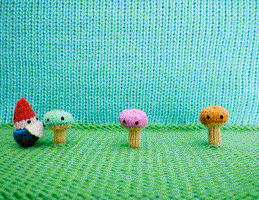Conductive PLA
FAQ:
Conductive PLA (shop here)
Have you ever wanted to create something with your 3D printer that includes electronics? Maybe an LED, touch sensor, or some other genius invention to solve the world’s problems? Then Protopasta Conductive PLA is the perfect material for you.
How Conductive Is It?
The measure normally used to characterize a conductor is “volume resistivity” with the units of Ohm-cm. This can be confusing because it is not obvious what it means like “miles per hour.” It is simply the resistance through a 1cm X 1cm X 1cm cube of material, with full sheet contact at 2 opposing surfaces. It is often misprinted as ohm/cm which is not a common unit of measure.
We measured the conductivity using a fixture we machined that clamps a sample between 2 sheet conductors and 1cm cubes printed on a Printrbot Simple Metal and machined from solid resin. Here are the results:
- Volume resistivity of molded resin (not 3D Printed): 15 ohm-cm
- Volume resistivity of 3D printed parts along the layers (X/Y axes): 30 ohm-cm
- Volume resistivity of 3D printed parts against the layers (Z axis): 115 ohm-cm
- Resistance of a 10cm length of 1.75mm filament: 2-3kohm
- Resistance of a 10cm length of 2.85mm filament: 800-1200ohm
Link to original kickstarter for more information:
http://www.kickstarter.com/projects/1375236253/electrically-conductive-pla-3d-printer-filament
Back to Top
Suggested Applications
Protopasta Conductive PLA is a great choice for low-voltage circuitry applications, touch sensor projects, and using prints to interact with touch screens (which require low conductivity, that's why you can't use your smart phone screen with gloves on). As a general rule, anything you can run through a 1K resistor should be doable with our material (if you design the conductors to be the right size). This will easily run a low current Arduino, if you are not powering much with it. Also, experiment with ESD or 3D printed bearings!
Here is a link to some projects:
http://www.thingiverse.com/AL3xD/collections/conductive
Protopasta Conductive PLA is a compound of Natureworks 4043D PLA, a dispersant and conductive carbon black. In filament form, it is quite flexible, and is compatable with any PLA printing printer.
Back to Top
Strength and Performance
We have not done substantial mechanical testing on this product but have some subjective parameters that should be useful in comparing this material with others:
- Strength: Fair strength. More flexible than PLA, but less layer adhesion
- Stiffness: Low, semi-flexible
- Heat Resistance: Similar to PLA, use below 50C
- Layer Adhesion: Fair layer adhesion. Not as good as normal PLA
- Flexibility: Filament is quite flexible but will break if bent repeatedly (particularly 2.85mm). Printed parts are rigid if more than a mm or two thick. Thin sections are somewhat flexible but fail along layer lines if flexed more than a few times.
- Failure Mode: If flexed to breakage, failure will be along layer lines.
- Warping: Very low warping
- Dual-Head compatibility: Compatible with (sticks to) PLA in dual material prints
Back to Top
Print Settings
Protopasta Conductive PLA is quite easy to print and is compatible with most printers that can print PLA.
Back to Top

